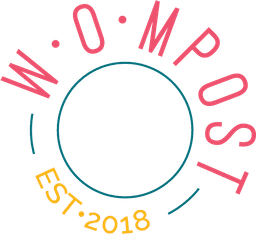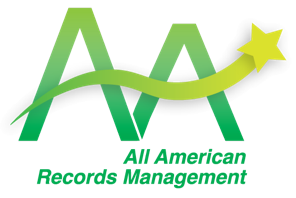Alert: The Plaza Building will remain closed through Jan. 20, 2025.
The Plaza Building will remain closed through Jan. 20, 2025. The Health Center is operating in a modified capacity. Call 303-615-9999 for appointment information during operating hours. Reminder, the Health Center is closed for the winter break Dec. 24 - Jan. 1.
Learn More
| Contact Us |
Julianna Nienart |
CU Anschutz strives to make collection of recyclable materials on campus unambiguous and convenient. The University tracks waste diversion rates and seeks to increase recycling volume through on-campus education, access to recycling bins, and building partnerships with key stakeholders. Specifically, we are looking to identify more recycling opportunities in campus labs, where research waste has historically proven to be a difficult waste stream to divert to recycling.
The University has been proud to partner with Wompost, a local women-owned business, to initiate composting on campus. In 2023, we composted 4,574 lbs. of waste. You can spot collection bins in dining areas, such as the Woodgrain café. We hope to grow our waste diversion efforts and volume through an increase of collection bins, signage, and education.


“Curbside collection” refers to the bins seen around campus that are emptied by our custodial staff and picked up by our contracted waste hauler(s). This includes recycling, landfill trash and compost.
| Recycling (blue bins) | Landfill (black bins) | Compost (restaurants only) |
|
Check the Drop-off Collection tab to see what materials can be diverted from landfill! |
|
Programs offered through your supplier often “down-cycle” your materials. For example, collected gloves will be turned into park benches, chairs, flooring, etc. The gloves will not be recycled into new gloves.
Below is not an exhaustive list. Reach out to your vendor’s representative and inquire about their sustainability offerings.
| Supplier | Accepted Materials |
| Polycarbin | Any brand of rigid plastics, pipet tip boxes, gloves, PPE |
| VWR, part of Avantor | Any brand of gloves, goggles, garments, masks, lightbulbs, batteries, aerosols |
| Kimberly Clark | Only KC brands of gloves, glasses, garments, masks, wipes |
| Fisher Scientific | Only Fisher brand pipet tip boxes |
| USA Scientific | Only USA Scientific brand pipet tip boxes |
| ScienceCycle, powered by TerraCycle | Any brand of PPE, rigid plastics, wipes, cleaning supplies |
“Drop-off collection” exists for hard-to-recycle items. Many items that would go into the landfill via curbside collection streams can be alternatively recycled through the drop-off collection stream.
| Location | Accepted Materials |
Eco-Cycle CHaRM | Accepted materials include pipet tip boxes and Styrofoam. For the complete list of accepted materials, please visit their website. |
Sustainability Recycling | Accepted materials include flexible plastic film and Styrofoam. For the complete list of accepted materials, please visit their website. |

Red Bins – Used to collect solid waste that may be treated by an autoclave, followed by disposal in a public landfill. Follow the “Rule of Thumb”: Tissue, organs, tumor, bones, etc. to be placed in the bins must be smaller than a thumbnail.
Yellow Bins – Used to collect solid waste containing trace chemotherapeutics or HIPAA protected information, that must be destroyed in an EPA-permitted medical waste incinerator. Follow the “Rule of Thumb”: Tissue, organs, tumor, bones, etc. to be placed in the bins must be smaller than a thumbnail.
Gray Bins – Used to collect solid waste that must be destroyed in an EPA-permitted medical waste incinerator. Follow the “Rule of Thumb”: Tissue, organs, tumor, bones, etc. to be placed in the bins must be larger than a thumbnail.
Sharps containers – Used to collect needles, syringes, razor blades, scalpels, broken glass, culture slides, etc.
For more specific information, or if you have questions about RMW, please reach out to biowaste.disposal@cuanschutz.edu and/or retake the Regulated Medical Waste Management training in Percipio.
| Red Bins | Yellow Bins | Gray Bins |
“Smaller than a thumbnail”
| “Smaller than a thumbnail”
| “Larger than a thumbnail”
|
Note:
- The red, yellow, gray and sharps bins are not for liquid waste.
- Glass (broken or unbroken) and pipettes that could puncture a trash bag, must be placed in a cardboard box and sealed.
- Placing items that should go in the landfill bins will cost your lab more money – Avoid putting non-hazardous waste in the red, yellow, gray or sharps bins.
- Chemical waste is to be disposed of through the chemical waste disposal request process.
Before requesting pick-up, try to give your items another life by offering them to staff and faculty on campus! Join the Furniture & Equipment Swap Teams group here: Furniture & Equipment Swap | General | Microsoft Teams
To dispose of equipment, including scientific machines and technology, you can submit a request via the EMS system.
Our team routes products and materials for recycling through our partners at Techno Rescue. Learn more about their mission here.
Due to its small size, shredded paper scraps cannot be accepted by traditional Material Recovery Facilities. The small slips fall through the machines and end up being sent to landfill. Because of this, the University partners with the local records managements company AARM for on-site confidential document shredding and recycling on campus. These bins are located throughout campus.

